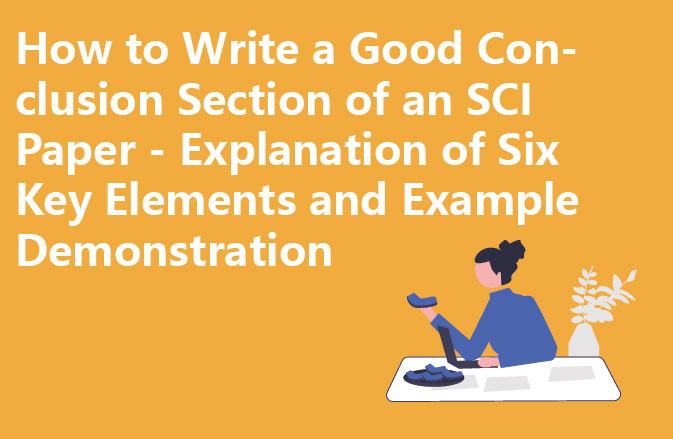(i) Six key elements
1. Overall principles
First of all, we should make it clear that the conclusion section is not simply a repetition of the experimental results, but rather an in-depth exploration of the principles behind the findings, their interconnections, and their general applicability. In the face of possible anomalies, lack of relevance, and unresolved controversies, we should remain honest and avoid attempting to disguise data that does not match expectations. In addition, by comparing current research with previous results, we can better demonstrate the consistency and differences of the research, thus highlighting its innovation and progress.
2. Echoing before and after
In the conclusion section, we should pay attention to echoing with the introduction section and answering the questions raised in the introduction. The introduction is usually from general to specific, while the conclusion is the opposite, it should first emphasise the main findings, and then explore the relationship between these findings and the results of previous research, to clarify the theoretical significance and practical application of scientific research results, and finally to clearly indicate the direction of further research.
3. Comparison of existing research
In the conclusion section, we need to compare the results of current research with those of previous researchers, emphasise the consistency and differences, and assess the innovation and progress of the research. Through this comparison, we can not only promote academic exchanges, but also point out the direction for future research and fill in the knowledge gaps.
4. Elaborate strengths and weaknesses
In the conclusion section, we need to emphasise the strengths of the research work, such as the excellence of the experimental technique and the large sample size, in order to enhance the quality of the paper and impress the editors and peer reviewers. At the same time, we also need to frankly admit the shortcomings and avoid trying to cover them up in order to enhance the credibility of the paper.
5. Highlight the significance of the results
At the end of the conclusion section, we need to provide a clear and concise summary of the significance of the results, conveying the core findings and importance of the study. We need to focus on highlighting the contribution of the findings to theory, application or practice to ensure that the reader fully understands the value of the research.
6. Determine the scope of conclusions
In revealing the interconnections between observed facts, we do not need to draw overly elaborate, esoteric conclusions, but rather to elucidate only a small portion of the truth in a given area. We advocate the use of simple, easy-to-understand language to better convey profound wisdom.
(ii) Reference template for ‘Conclusion’ writing
When writing an SCI paper, especially a conclusion for a top journal, we need to be more concise and specific. Below, we will provide you with a reference template for writing conclusions in SCI papers:
Conclusion writing template
1. Summary of key findings
At the beginning of the conclusion section, we need to summarise the main findings of the study in a clear and concise manner. This section needs to provide a high-level overview of the findings of the study.
Example:
‘Overall, our investigation revealed [key findings] that provide important insights into [research question].’
2. Compare and Contrast Previous Research
In comparing your findings to previous research, we need to highlight the uniqueness and innovation of your research in the field. We need to emphasise how your research fills a knowledge gap.
Example:
‘The comparative analysis with the existing literature highlights the novel contribution of our study, especially in terms of [consistency/differences with previous studies].’
3 Substantive contribution and impact
We need to clearly state the substantive contribution of your research to the academic field and practical applications. We want to emphasise the impact and advancement of your findings on the field.
Example:
‘The substantial contribution of our research goes beyond academia and has far-reaching implications for [academic field/practical application]. This research has significantly advanced our understanding of [field of study].’




